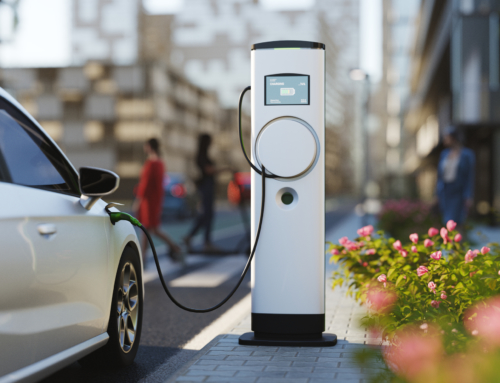Becoming more sustainable isn’t just an individual decision—states and countries across the globe are making a determined shift toward clean and renewable energy. These efforts go hand-in-hand with the priority of reducing our dependence on fossil fuels.
But what is green renewable energy? Is it the same as clean energy? We’re breaking down the key distinctions between green, renewable, and clean energy and how to use these sources for your own energy needs.
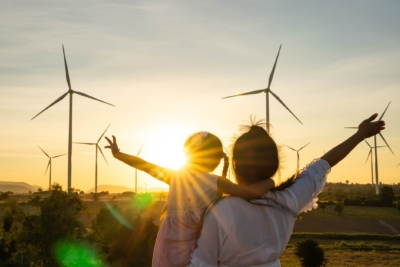
What Is the Difference Between Green and Renewable Energy?
Every form of green energy shares one underlying goal—to leave minimal environmental impact. But is renewable energy always green?
Green Energy vs. Renewable Energy
The term “green renewable energy” refers to multiple types of energy production, but each shares three common traits:
- They only use resources coming directly from nature.
- They are renewable.
- The complete cycle—from creation to use—results in carbon-neutral energy.
You can think of renewable energy sources as the opposite of finite resources like coal and gas. While all green energy relies on renewable resources, not all renewable forms of energy are green.
The following four characteristics of renewable energy are essential to understand:
- All renewable forms of energy utilize natural resources somewhere in their cycle, from production to use.
- All renewable energies continuously reuse the same resources.
- An energy production process can be both green and renewable.
- Not all renewable energy is green or clean, as some renewable production processes can emit pollutants or harm the environment.
What Is Clean Energy?
Clean energy comes from any source that doesn’t cause pollution. However, an energy source doesn’t have to be just green or renewable; it can be both. Sources like solar and wind are good examples of green, renewable, and clean energy.
Nuclear energy is an example of clean energy that is not usually considered green. While its production results in almost zero emissions, it uses uranium, a non-renewable natural resource whose use has grown extensively in the recent past, though it is more plentiful than once believed.
What Are the 5 Main Kinds of Renewable Energy?
It’s helpful to understand the five main types of renewable processes and whether each qualifies as green or clean.
1. Solar Power
It’s no surprise the sun is one of the most reliable, continuous energy sources. Solar power converts sunlight into electricity using photovoltaic solar cells. Solar is a green, renewable, clean energy source that can be stored using battery systems.
Unlike scarce resources, solar power is becoming even more abundant through material improvements and declining costs. Solar panels can harness the sun’s power in a way that far outweighs any initial manufacturing impact, providing energy for 25 years or more.
2. Wind Power
The sun is also responsible for wind power since wind occurs due to hot and cold atmospheric changes. Therefore, the wind will provide renewable energy as long as we have the sun.
Wind turbines are large structures that have some negative environmental impact during production, but they provide a continuous energy source that is renewable, green, and clean. Large plots with numerous wind turbines are called wind farms. They’re widely considered the most efficient and least harmful form of green energy.
3. Hydroelectric Power
Thousands of years ago, the Romans used water-powered turbines to grind grain. Today’s hydroelectric power mainly comes from large dams that store up the power of compressed, flowing water that turns massive turbines.
There are several other forms of hydroelectric power, such as:
- Pumped storage hydropower (PSH): Generates its power from an upper and lower water reservoir and stores up energy like a battery
- Run-of-river: Considered greener than some forms of hydroelectric power, using the natural flow of water to harness its energy
- Tidal hydroelectric power: A predictable and reliable power source that relies on the power generated by the rising ocean tides
Hydropower is clean and renewable but not entirely green. It doesn’t create pollutants, and it uses replenished natural resources. But hydropower negatively affects wildlife, fish, and the overall local landscape.
Still, hydropower is usually considered green because it doesn’t deplete or destroy its surroundings. Given the clean, natural energy it offers, this source represents an important step toward sustainable energy.
4. Geothermal Energy
Like hydroelectric power, geothermal energy moves turbines. In this case, the heat produced under the earth’s surface produces the necessary power. While access to geothermal energy typically involves drilling, it’s a renewable, green, and clean source of energy that has the potential to reduce our dependence on coal dramatically.
Geothermal energy is highly localized—one state may have natural sulfur springs while another has a volcano. The differing landscapes can provide different levels of power. For example:
- Using steam from geothermal energy sources can move turbines that power entire industrial plants.
- Implementing heat pumps that use the earth’s consistent underground temperature can replace HVAC systems and water heaters that rely on electricity or gas.
5. Biomass and Biofuel
Biomass and biofuel are two closely linked renewable resources. Both are non-toxic and biodegradable; their energy begins with the most naturally occurring process—using the sun to grow plant life.
Biomass
Biomass always exists in solid form and can serve as an energy source in this form. For example, power plants can replace petroleum energy with biomass by burning sawdust and agricultural waste.
Biofuels
A biofuel is a liquified form of biomass. It originates as a solid biomass material that undergoes a conversion process. The most well-known examples of biofuel are:
- Ethanol: This renewable fuel can be made from biomass that comes from plant starches and sugars. These resources turn into alcohol used as a blending agent in gasoline. The resulting gasoline reduces carbon dioxide and smog emissions. Ethanol is now mixed into 98% of the fuel supply in the US.
- Biodiesel: This renewable fuel is similar to ethanol but derived from used vegetable oils and animal fats. It replaces diesel as a cleaner burning fuel and can serve as a direct substitute in engines that rely on diesel fuel.
The Bioenergy Technologies Office (BETO) is developing new biofuels from cellulose and algae-based biomass, so innovations are helping to define green renewable energy.
Creating and converting biomass and biofuel into energy releases carbon dioxide, but plants in nature reabsorb and use the gas. Thus, this bioenergy produces the same carbon dioxide plants need, fueling the next growth cycle.
How Accessible Is Green Renewable Energy?
The move toward green, renewable, clean energy is the future. But purchasing green appliances and solar panels, retrofitting older systems, and adapting to better practices all come with a cost. These changes can be a financial burden, particularly for low-income households.
The Inflation Reduction Act is widely considered a sweeping reshaping of the energy industry in the US, with a wide-reaching intention to make green, renewable energy accessible to low-income consumers. Its overarching goal is to reduce emissions by approximately 40% by 2030.
The funding makes green renewable energy more accessible to many Americans. Some of the key incentives it offers include:
- $9 billion in home energy rebate programs to help people electrify their home appliances and invest in energy-efficient retrofits, with a focus on low-income consumers
- Consumer tax credits for geothermal, solar, and eco-friendly HVAC and water heaters
- $1 billion in grants for clean home energy
- Provisions for domestic mining of solar and battery materials and tax credits for the production of solar, wind, turbines, and minerals
- $10 billion in tax credits for sustainable manufacturing
The act supplies $369 billion to fund clean energy over the next decade.
Become Part of the Future of Green Renewable Energy
Understanding what green renewable energy is can help you take steps toward living a greener, more sustainable life.
Spring Power and Gas serves residents in New Jersey, Pennsylvania, and Maryland, offering energy plans that match up to 100% of electricity and gas usage with renewable sources. Enroll in a plan that best suits your needs. If you have any questions, get in touch with us today!
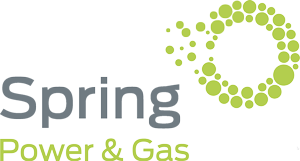
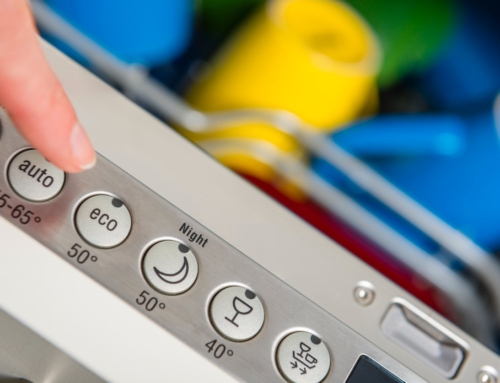
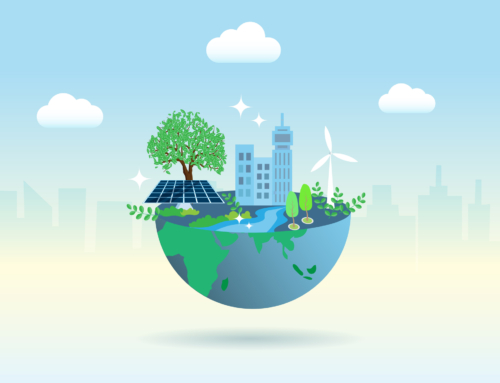

![Top 11 Sustainable Building Practices for Eco-Homes [Plus 5 Sustainable Materials]](https://springpowerandgas.us/wp-content/uploads/2023/02/iStock-181062267-500x383.jpg)
